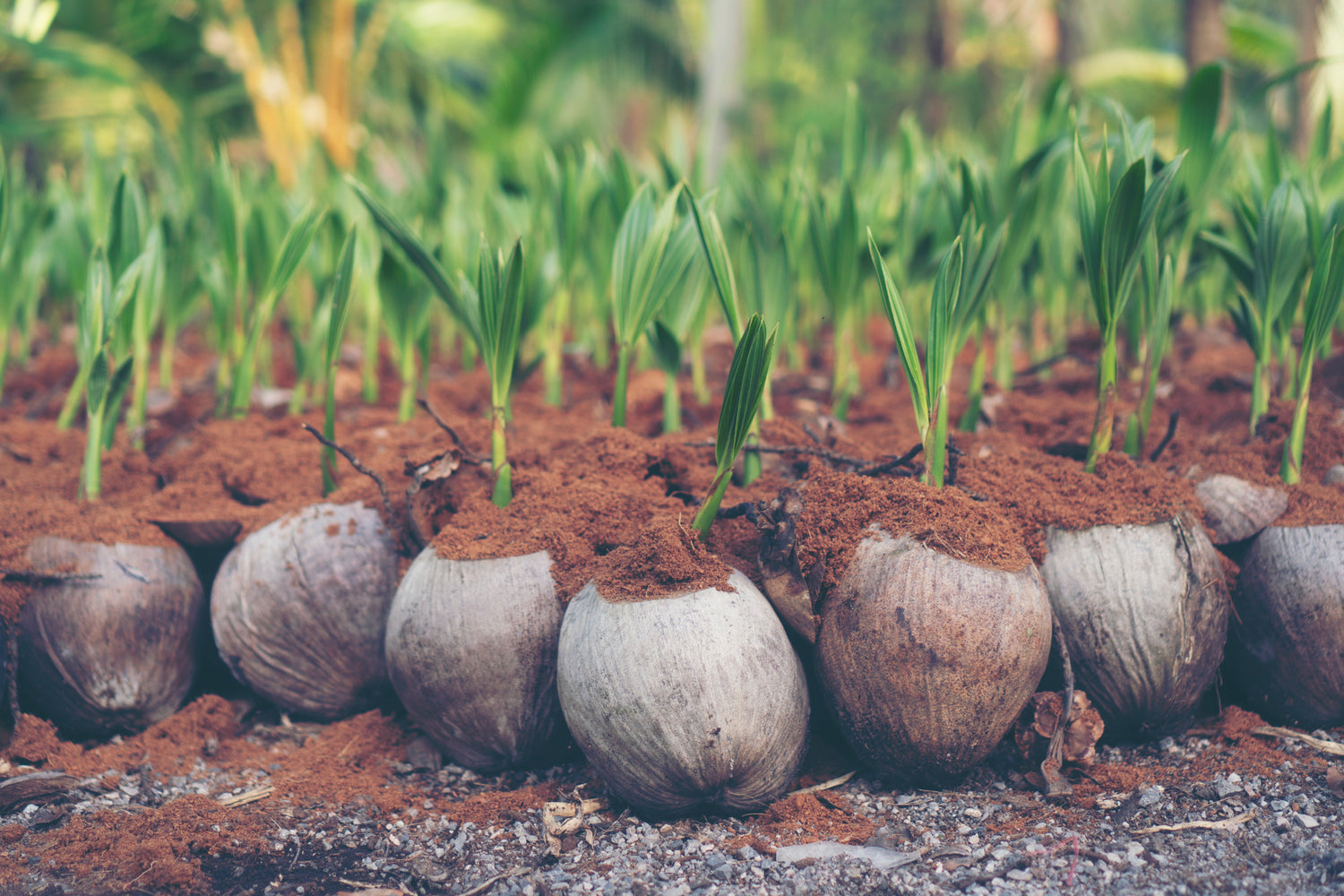Soil analysis is the viable tool that can determine the quantum of macro and micronutrients available for uptake by the root system. It can also determine the ability of soil for continued supply of nutrients throughout the crop growth period so that nutrient application can be tailored to suit the crop demand. Soil testing helps in proper choice of fertilizer in tandem with the soil fertility status. One can identify soil borne constraints and impose remedial measures through soil testing viz., lime application for acid soils and gypsum application for alkali soils. Proper and representative sampling technique shall go a long way in getting precise analytical results for maintaining better soil health and for enhanced productivity.
Using proper soil and moisture conservation techniques is crucial for maintaining sustainable coconut production, especially in rainfed areas with uneven and sloped terrains.
Soil Management
For optimal coconut growth, the soil can range from light sandy to heavy types with a pH between 5.2 and 8.0. The soil should have proper drainage, good water-holding capacity, a water table within 3 meters, and no rock or hard layer within 2 meters of the surface. Ideal conditions include an altitude of 600 to 900 meters and annual rainfall of around 200 cm. It is advised to do soil analysis for soil management.
Time of soil sample collection
It's best to avoid soil sampling during the rainy season to prevent inaccurate results due to nutrient leaching. Ideally, soil sampling should be conducted before applying any chemical fertilizers or organic manures. For coconut plantations, it's recommended to repeat soil analysis every three to four years to ensure accurate nutrient management.
Sampling procedure
When collecting soil samples, avoid areas near feed lots, manure pits, cattle sheds, fence lines, roads, irrigation channels, bunds, marshy spots, and electric lines to ensure accurate results. For every five acres, a sample should be collected. However, if there are noticeable differences in soil type, slope, erosion, drainage, colour, texture, or structure within that area, separate samples should be taken for those distinct regions.
When analyzing the soil for the first time to assess the general fertility status of a coconut orchard, choose a vacant area between four coconut palms. After removing surface litter, dig a minipit about 60 cm deep at the coconut center, which is the area between the four palms. The soil should be divided into two layers: 0-30 cm and 30-60 cm. Begin by collecting soil from the lower layer (30-60 cm) to avoid contamination from the upper layer (0-30 cm). The sampling process should be repeated at five to six locations across homogeneous sampling units, following a zig-zag pattern for consistency. For subsequent sampling, collect soil within a 1.5-meter radius from the base of the trunk, where the feeder roots are concentrated.
Once all samples are collected, thoroughly mix them to create a composite sample, removing any foreign materials like roots, stones, and gravel. Reduce the sample size to one kilogram using the quartering method, which involves dividing the soil into four equal parts, discarding two opposite quarters, and mixing the remaining soil. Repeat this process until the desired sample size is achieved. Alternatively, a core sampler can be used to collect intact cores for bulk density determination.
Finally, soil samples should be placed in a clean cloth or polythene bag and labeled with essential information such as the farmer's name, farm location, survey number, previous crops, current crop, and the date of soil sample collection.

Soil sampling is a crucial practice in coconut cultivation for several reasons:
- Nutrient Management: Soil tests reveal the levels of essential nutrients (N, P, K, etc.) and micronutrients in the soil. This information helps determine the type and amount of fertilizers needed for optimal coconut growth and yield.
- pH Assessment: Soil pH affects nutrient availability. Soil testing helps determine if the soil is acidic, alkaline, or neutral and if amendments like lime or gypsum are needed to adjust the pH to the ideal range for coconut (5.2-8.6).
- Problem Identification: Soil tests can identify potential problems like salinity, nutrient deficiencies, or toxicities that may be hindering coconut growth.
- Environmental Protection: By applying fertilizers based on soil test results, farmers can avoid over-fertilization, which can lead to environmental pollution.
-
Economic Benefits: Soil testing helps optimize fertilizer use, saving farmers money and maximizing returns on investment.
